Family: Siricidae
Subfamily: Siricinae
Genus: Sirex Linnaeus, 1760
Species: Sirex areolatus (Cresson, 1868)
Common names: none
Sirex areolatus is a western NearcticNearctic:
describing the region of the Northern Hemisphere that includes North America south through northern Mexico
 species with a typical metallic blue-black coloration and completely dark legs (Schiff et al. 2012Schiff et al. 2012:
species with a typical metallic blue-black coloration and completely dark legs (Schiff et al. 2012Schiff et al. 2012:
Schiff NM, Goulet H, Smith DR, Boudreault C, Wilson AD, and Scheffler BE. 2012. Siricidae (Hymenoptera: Symphyta: Siricoidea) of the Western Hemisphere. Canadian Journal of Arthropod Identification 21: 1-305.).
See Sirex for genus-level diagnostic characteristics.
Females:
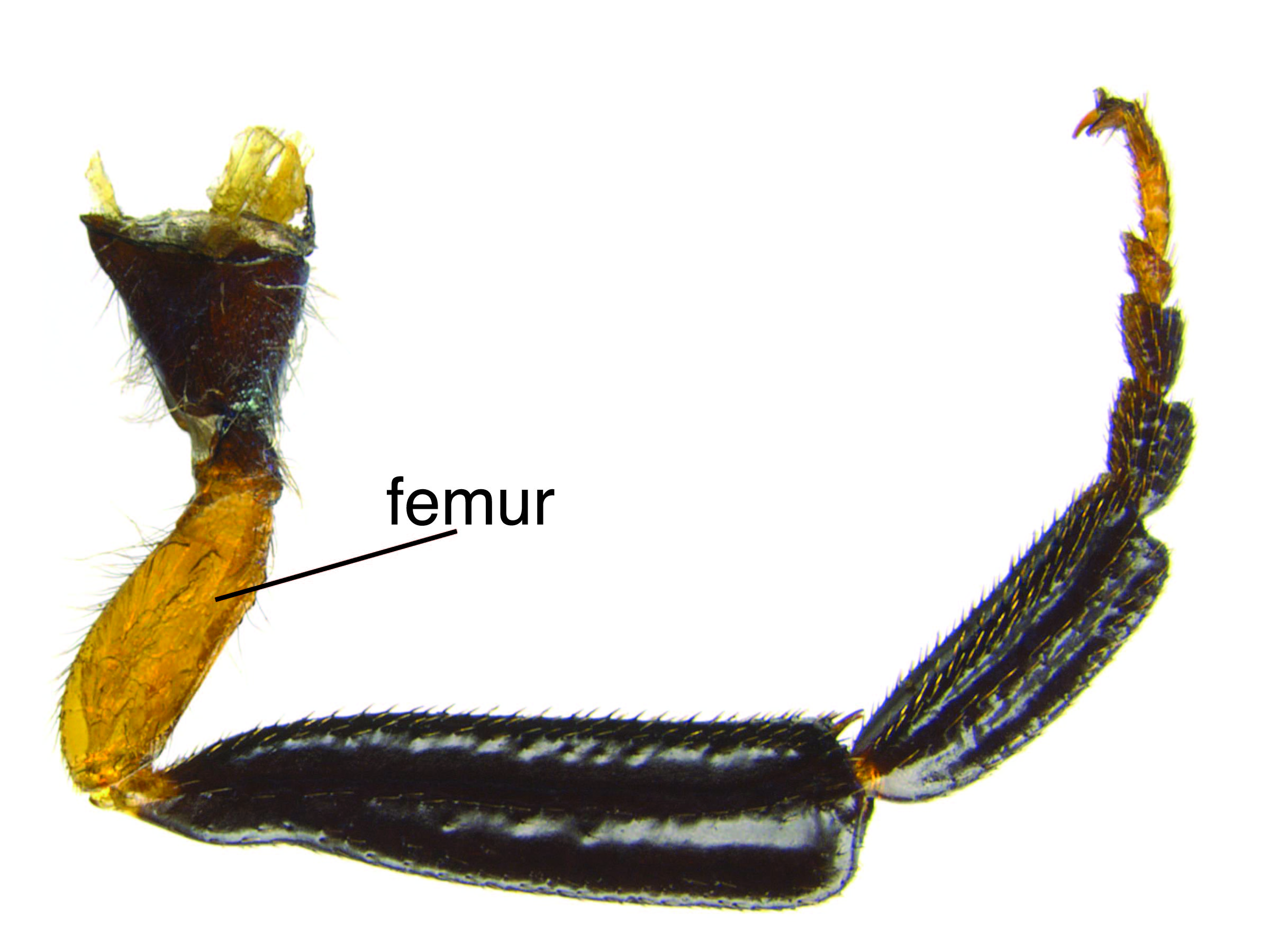 black (Schiff et al. 2012Schiff et al. 2012:
black (Schiff et al. 2012Schiff et al. 2012: metallic blue-black (Schiff et al. 2012Schiff et al. 2012:
metallic blue-black (Schiff et al. 2012Schiff et al. 2012: and tarsitarsus:
and tarsitarsus: dark brown or black (Schiff et al. 2012Schiff et al. 2012:
dark brown or black (Schiff et al. 2012Schiff et al. 2012: vein 3A present
vein 3A present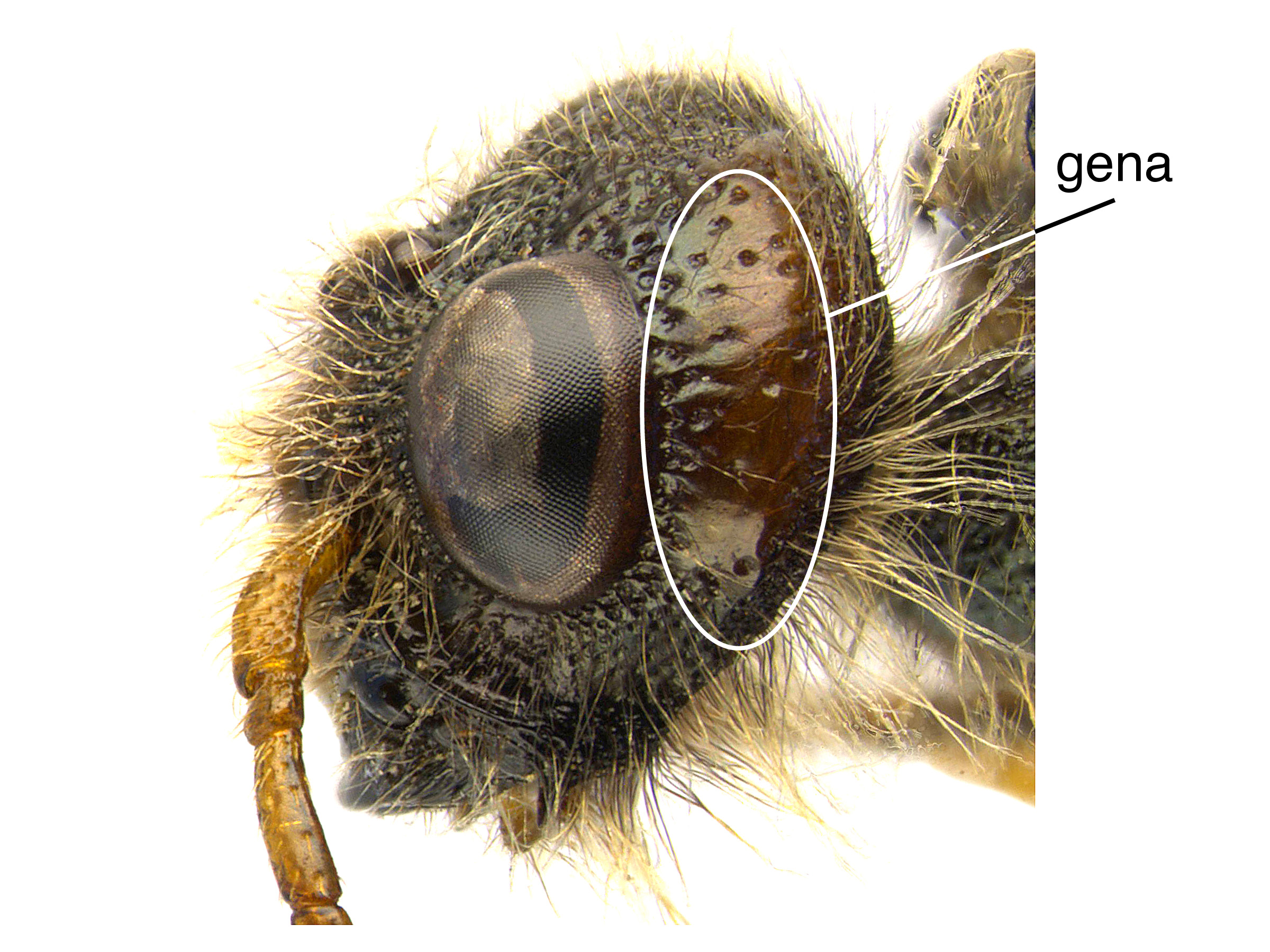 scattered, about 1–5 pit diameters apart (Schiff et al. 2012Schiff et al. 2012:
scattered, about 1–5 pit diameters apart (Schiff et al. 2012Schiff et al. 2012: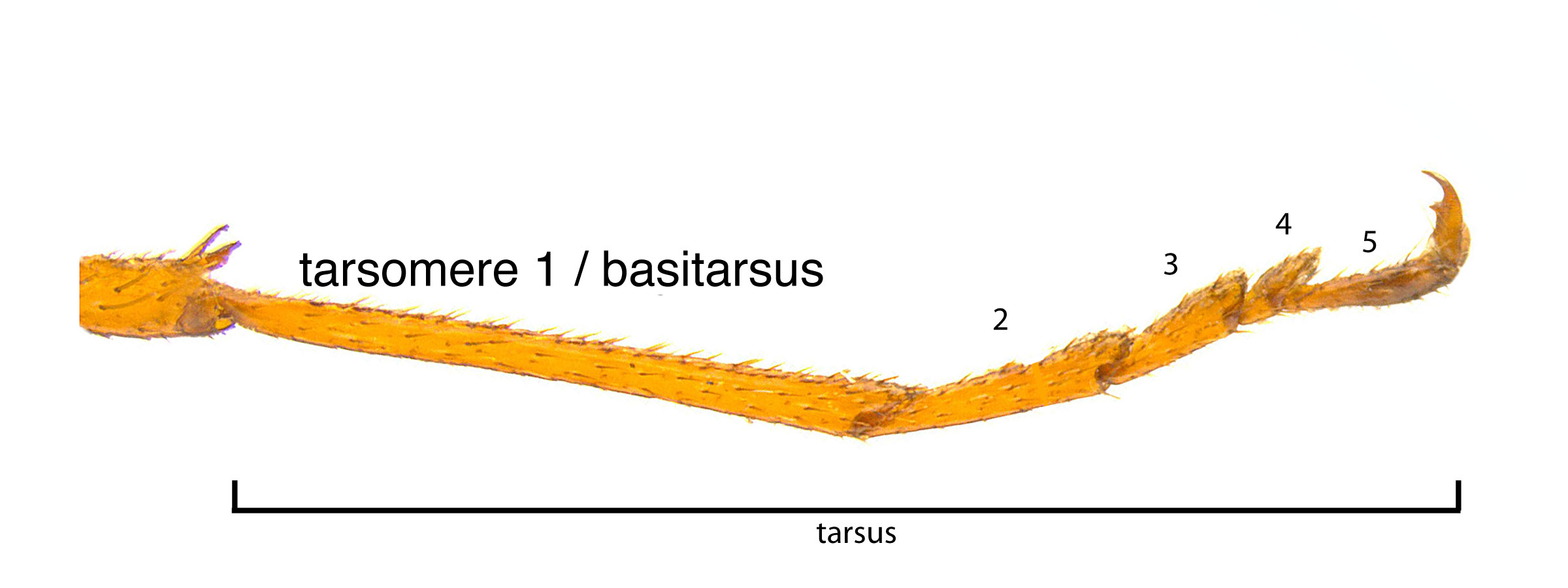 5 times as long as wide (Schiff et al. 2012Schiff et al. 2012:
5 times as long as wide (Schiff et al. 2012Schiff et al. 2012: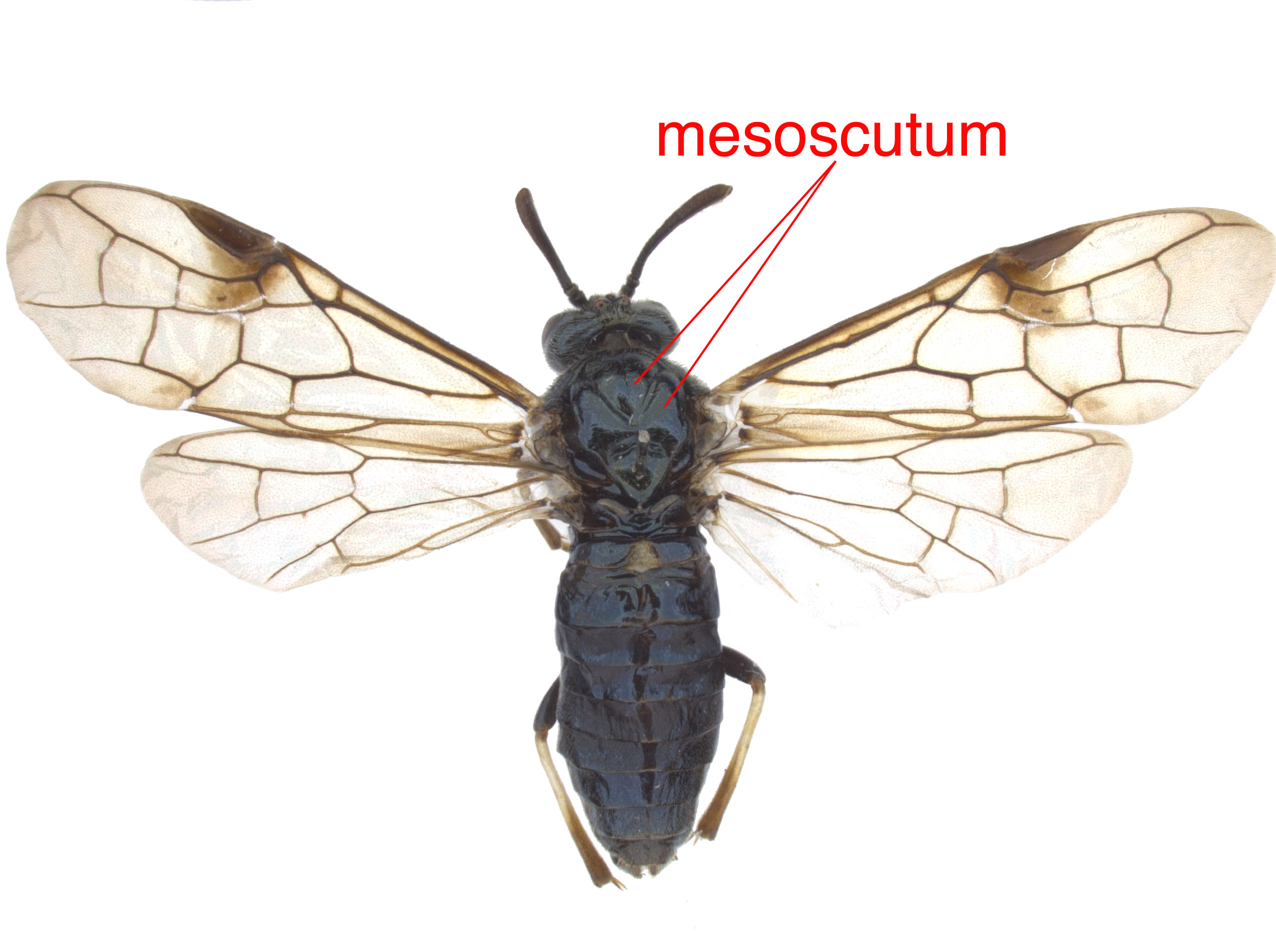 pits dense, forming a few transverse ridges (Schiff et al. 2012Schiff et al. 2012:
pits dense, forming a few transverse ridges (Schiff et al. 2012Schiff et al. 2012: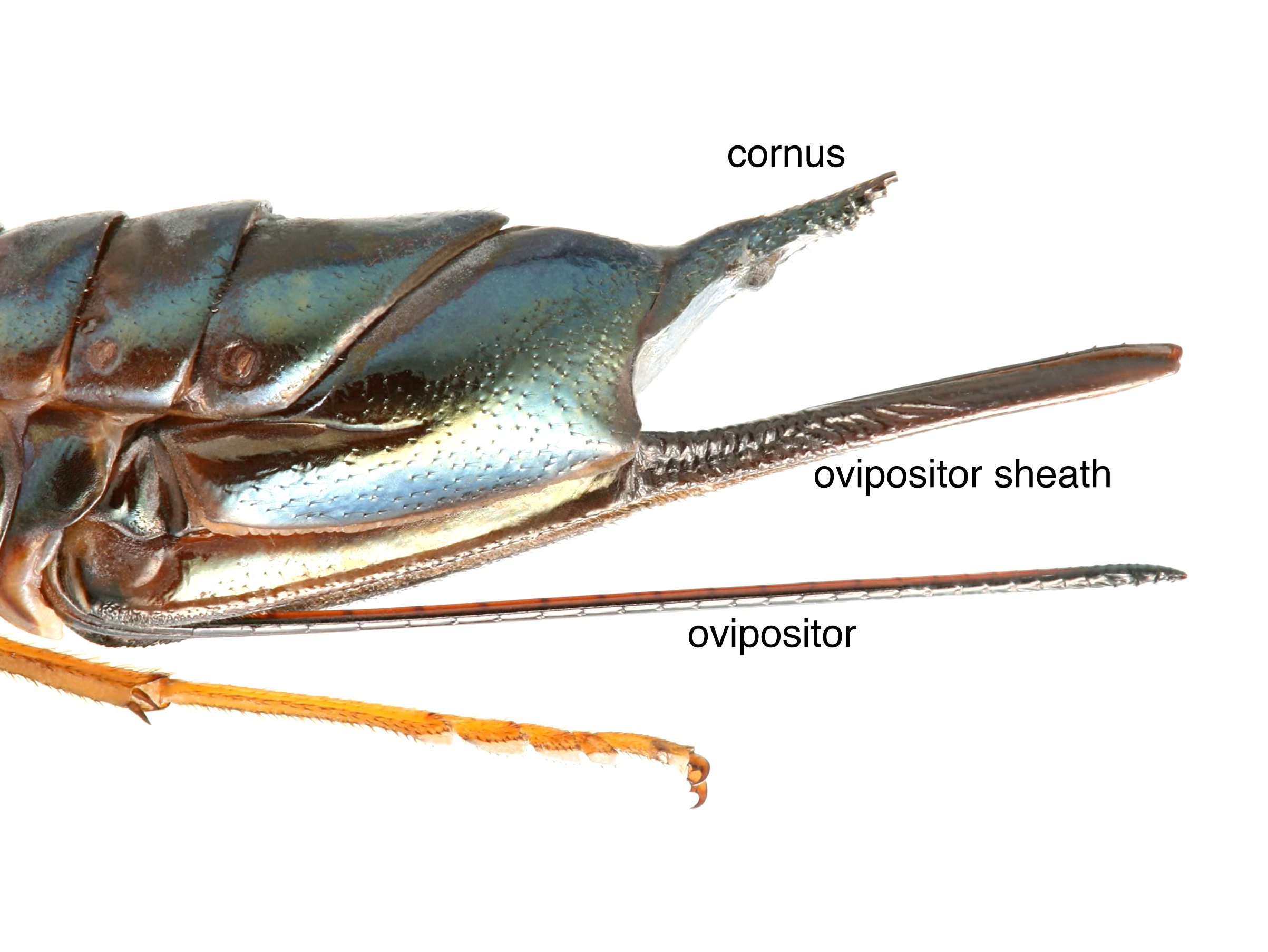 with clear pits at the basebase:
with clear pits at the basebase: with pulvilluspulvillus:
with pulvilluspulvillus: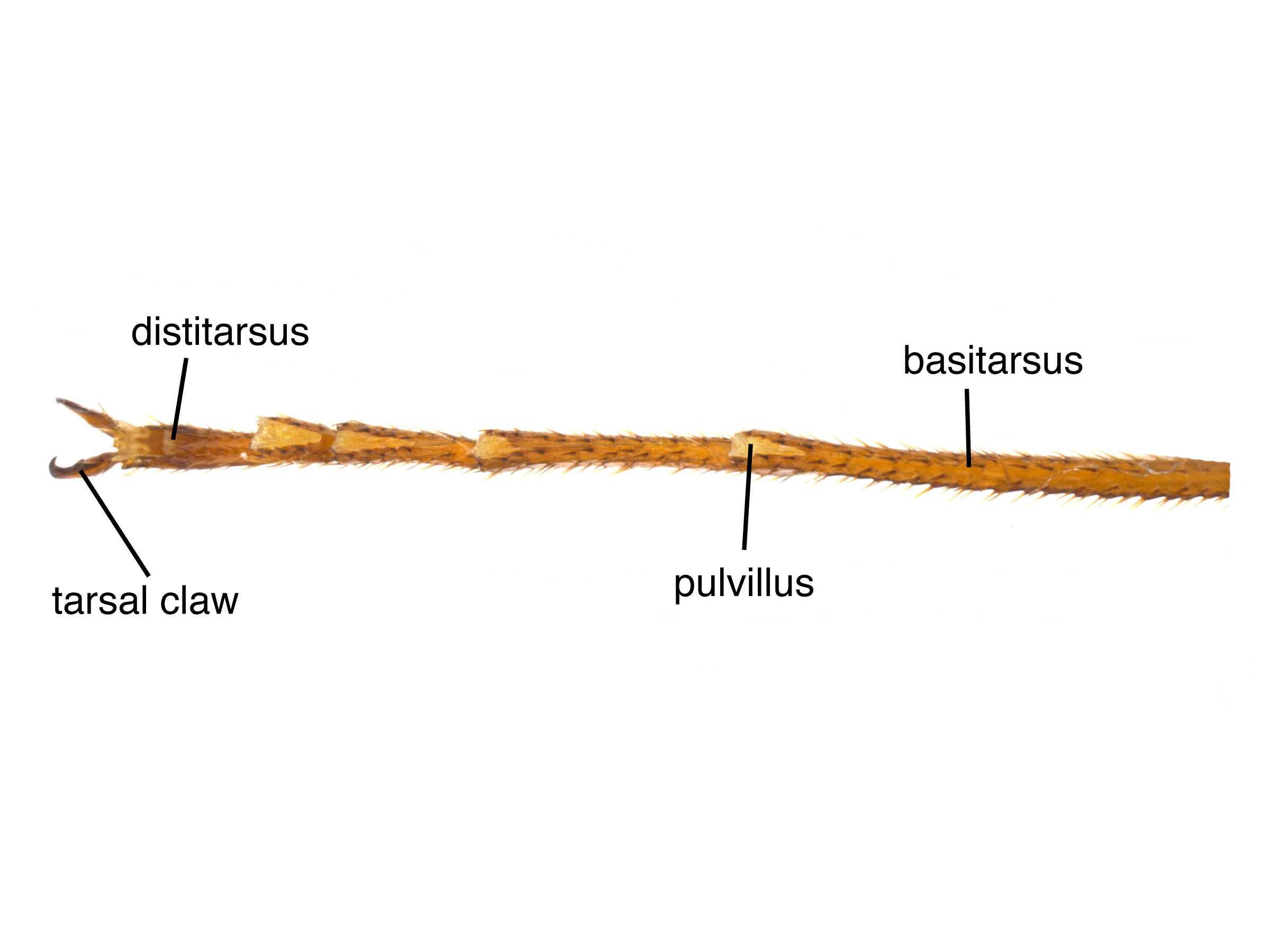 0.35–0.5 times the length of tarsomeretarsomere:
0.35–0.5 times the length of tarsomeretarsomere: (Schiff et al. 2012Schiff et al. 2012:
(Schiff et al. 2012Schiff et al. 2012: sheath length about 0.6–1 times the length of apicalapical:
sheath length about 0.6–1 times the length of apicalapical:Males:
 dark blue with metallic reflections (Schiff et al. 2012Schiff et al. 2012:
dark blue with metallic reflections (Schiff et al. 2012Schiff et al. 2012: pits scattered and somewhat large (Schiff et al. 2012Schiff et al. 2012:
pits scattered and somewhat large (Schiff et al. 2012Schiff et al. 2012:Sirex areolatus can be distinguished by the long hind tarsomeretarsomere:
a segment of the tarsus
 2 and completely black legs in both sexes (Schiff et al. 2012Schiff et al. 2012:
2 and completely black legs in both sexes (Schiff et al. 2012Schiff et al. 2012:
Schiff NM, Goulet H, Smith DR, Boudreault C, Wilson AD, and Scheffler BE. 2012. Siricidae (Hymenoptera: Symphyta: Siricoidea) of the Western Hemisphere. Canadian Journal of Arthropod Identification 21: 1-305.).
none recorded
Sirex species feed on trees of Pinaceae and Cupressaceae. Sirex areolatus is recorded mainly on species of Cupressaceae such as Juniperus occidentalis (western juniper), Juniperus scopulorum (Rocky Mountain juniper), Calocedrus decurrens (incense cedar), Sequoia sempervirens (coast redwood), Thuja sp., and Taxodium distichum (bald cypress). Sirex areolatus is less commonly recorded on Pinaceae, including Pinus contorta (lodgepole pine), Pinus jeffreyi (Jeffrey pine), Pinus lambertiana (sugar pine), Pinus radiata (Monterey pine), and Pseudotsuga menziesii (Douglas fir) (Schiff et al. 2012Schiff et al. 2012:
Schiff NM, Goulet H, Smith DR, Boudreault C, Wilson AD, and Scheffler BE. 2012. Siricidae (Hymenoptera: Symphyta: Siricoidea) of the Western Hemisphere. Canadian Journal of Arthropod Identification 21: 1-305.).
Female Sirex harbor symbiotic basidiomycete fungus in abdominal glands called mycangia. During oviposition, the site is inoculated with the fungus, which begins to decompose the surrounding wood. LarvaeLarva:
the immature stage of holometabolous insects
 feed on the fungus, and in the process bore galleries through the wood (Johnson 1930Johnson 1930:
feed on the fungus, and in the process bore galleries through the wood (Johnson 1930Johnson 1930:
Johnson CW. 1930. On the variation and abundance of Sirex nitidus Harris. Psyche 37 (3): 281-282. https://doi.org/10.1155/1930/62786, Schiff et al. 2012Schiff et al. 2012:
Schiff NM, Goulet H, Smith DR, Boudreault C, Wilson AD, and Scheffler BE. 2012. Siricidae (Hymenoptera: Symphyta: Siricoidea) of the Western Hemisphere. Canadian Journal of Arthropod Identification 21: 1-305.). It is unknown what species of fungus is harbored by the mycangia of S. areolatus; Amylostereum areolatum and A. chailletii are associated with other NearcticNearctic:
describing the region of the Northern Hemisphere that includes North America south through northern Mexico
 Sirex (Hajek et al. 2013Hajek et al. 2013:
Sirex (Hajek et al. 2013Hajek et al. 2013:
Hajek AE, Nielsen C, Kepler RM, Long SJ, and Castrillo L. 2013. Fidelity among Sirex woodwasps and their fungal symbionts. Microbial Ecology 65: 753-762. https://doi.org/10.1007/s00248-013-0218-z).
Larvae are creamy white and grub-like in appearance with a dark head capsule. As with adults, larvaelarva:
the immature stage of holometabolous insects
 possess a short dorsaldorsal:
possess a short dorsaldorsal:
of or on the top surface of the body or structure
horn on the posterior end of the body. The larvaelarva:
the immature stage of holometabolous insects
 bore galleries into wood, feeding until pupation and subsequent emergence. Throughout this process, the larvaelarva:
bore galleries into wood, feeding until pupation and subsequent emergence. Throughout this process, the larvaelarva:
the immature stage of holometabolous insects
 use their horn to pack the tunnel behind them with sawdust. Emergence holes are perfectly circular. The fungal symbiont is carried in specialized organs in female larvaelarva:
use their horn to pack the tunnel behind them with sawdust. Emergence holes are perfectly circular. The fungal symbiont is carried in specialized organs in female larvaelarva:
the immature stage of holometabolous insects
 that develop into the mycangia after metamorphosis (Schiff et al. 2012Schiff et al. 2012:
that develop into the mycangia after metamorphosis (Schiff et al. 2012Schiff et al. 2012:
Schiff NM, Goulet H, Smith DR, Boudreault C, Wilson AD, and Scheffler BE. 2012. Siricidae (Hymenoptera: Symphyta: Siricoidea) of the Western Hemisphere. Canadian Journal of Arthropod Identification 21: 1-305.).
The documented flight period of S. areolatus is early September through early October, which is notably shorter and later than many other Sirex species in its range (Schiff et al. 2012Schiff et al. 2012:
Schiff NM, Goulet H, Smith DR, Boudreault C, Wilson AD, and Scheffler BE. 2012. Siricidae (Hymenoptera: Symphyta: Siricoidea) of the Western Hemisphere. Canadian Journal of Arthropod Identification 21: 1-305.). There is some evidence that trees with sustained damage, either from drought-related stress, weather, or other insect infestations, are preferred as hosts (Burnip et al. 2010Burnip et al. 2010:
Burnip GM, Voice D, and Brockerhoff EG. 2010. Interceptions and incursions of exotic Sirex species and other siricids (Hymenoptera: Siricidae). New Zealand Journal of Forestry Science 40: 133-140.).
A few species of parasitoid wasps have been recorded emerging from S. areolatus, including Ibalia leucospoides and Rhyssa persuasoria (Schiff et al. 2012Schiff et al. 2012:
Schiff NM, Goulet H, Smith DR, Boudreault C, Wilson AD, and Scheffler BE. 2012. Siricidae (Hymenoptera: Symphyta: Siricoidea) of the Western Hemisphere. Canadian Journal of Arthropod Identification 21: 1-305.).
World: North America. This species has been intercepted at ports in England and New Zealand (Schiff et al. 2012Schiff et al. 2012:
Schiff NM, Goulet H, Smith DR, Boudreault C, Wilson AD, and Scheffler BE. 2012. Siricidae (Hymenoptera: Symphyta: Siricoidea) of the Western Hemisphere. Canadian Journal of Arthropod Identification 21: 1-305.).
North America: The range of S. areolatus is generally western and extends as far north as British Columbia, and south to New Mexico. This species is adventive in several eastern jurisdictions, including Nova Scotia, Virginia, Arkansas, and Florida (Schiff et al. 2012Schiff et al. 2012:
Schiff NM, Goulet H, Smith DR, Boudreault C, Wilson AD, and Scheffler BE. 2012. Siricidae (Hymenoptera: Symphyta: Siricoidea) of the Western Hemisphere. Canadian Journal of Arthropod Identification 21: 1-305.).
Map data from: GBIF.org (26 June 2019) GBIF Occurrence Download Sirex areolatus
Details about data used for maps can be found here.